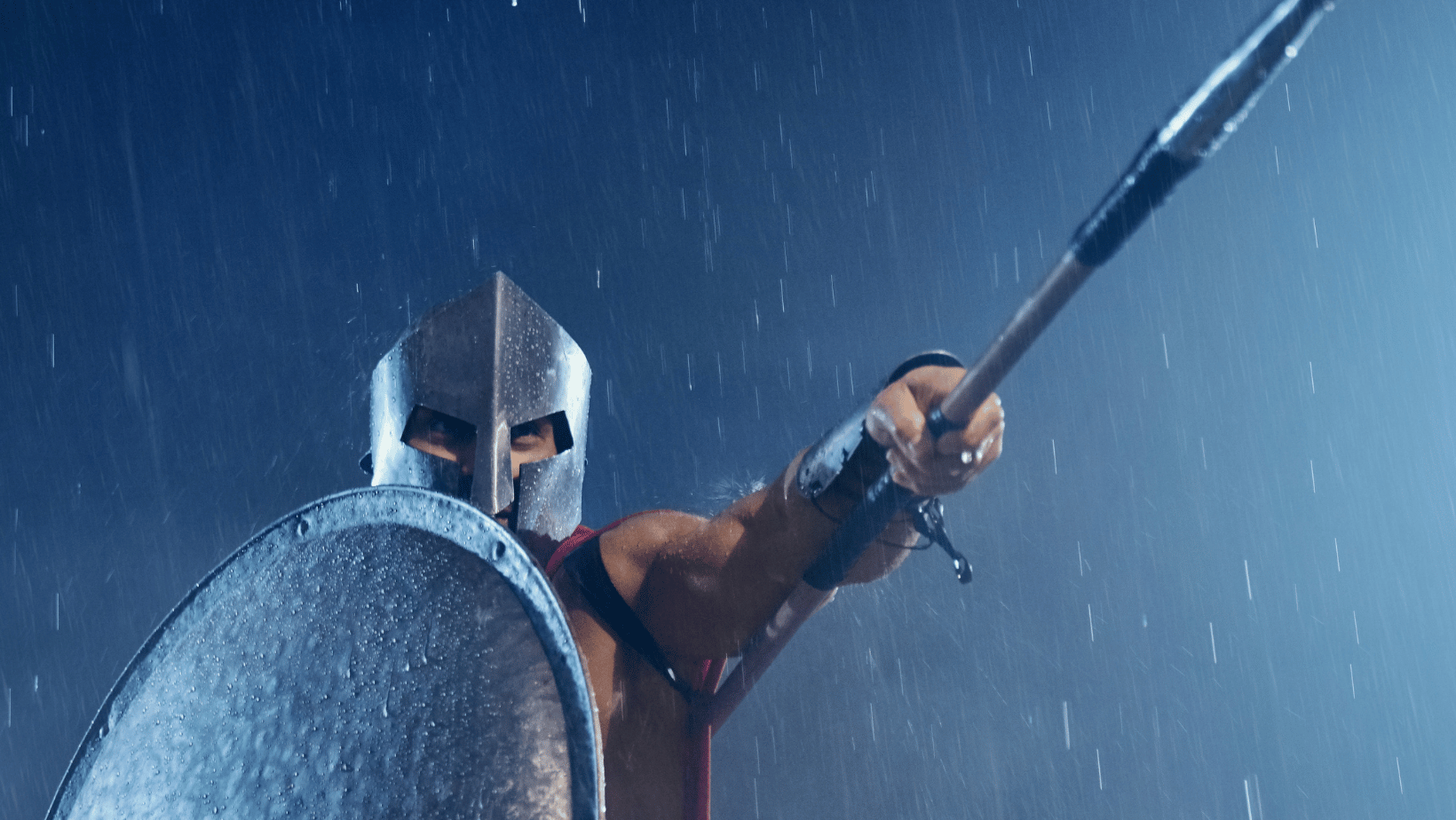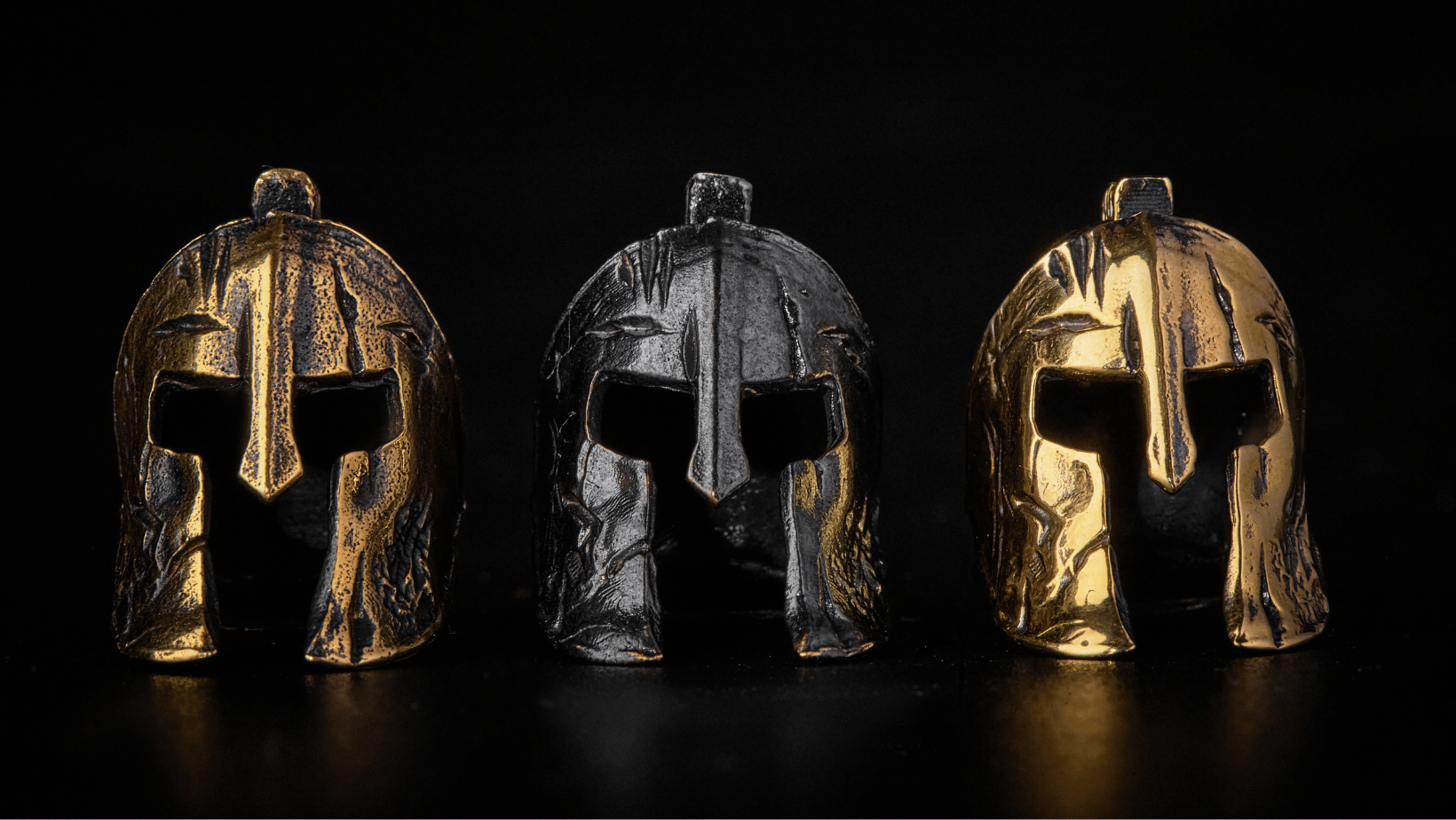The very word "Spartan" evokes images of unwavering discipline, chiseled physiques, and ferocious warriors dominating the battlefield. But beyond the romanticized Hollywood portrayals lies a fascinating reality – a society meticulously crafted to create the ultimate fighting force.
Today, we embark on a journey to unveil the secrets of Spartan fitness, delving into the Agoge, their infamous training system, and the fuel that powered these legendary warriors.
Part 1: The Agoge – A Crucible for Forging Warriors
Spartan society thrived on military dominance. Their education system, the Agoge (meaning "training" or "upbringing"), wasn't about acquiring knowledge. It was a brutal, years-long ordeal designed to weed out the weak and forge elite soldiers. At a tender age of seven, boys were ripped from their families and thrust into a harsh communal life. This wasn't basic training; it was a crucible designed to instill the core Spartan values: obedience, self-reliance, and endurance.
Building the Spartan Body: A Regimen of Trials
Spartan life revolved around physical conditioning. Historical evidence paints a vivid picture: Plutarch, a Greek biographer, details core exercises like wrestling, jumping, javelin throwing, and discus throwing in his work "Lives." Archaeological discoveries of extensive training facilities like the Palestra further support this focus on physical education. Spartan boys likely engaged in grueling runs, practiced relentlessly with weapons (including the iconic hoplon shield and xiphos sword), and participated in endurance tests like the Krypteia – a secret police mission that involved surviving off the land and potentially killing enemy slaves. Every aspect of their lives was geared towards building a strong, agile, and resilient physique.
Beyond Strength: Forging Mental Fortitude
⠀The Agoge wasn't just about physical prowess. Spartans were expected to endure pain and hardship without complaint. Military historian Xenophon, in his work "Constitution of the Lacedaemonians," describes the Agoge as a system designed to produce soldiers who were "superior in courage and obedience to all other men." This mental toughness was instilled through harsh discipline, public whippings during rituals like the Krypteia, and a cultural emphasis on a "fear of shame" greater than the fear of death.
Unearthing the Lost Art of Spartan Training:
Historians continue to debate the exact details of Spartan training. However, by piecing together fragments of ancient texts and archaeological evidence, we can create a compelling picture. Literary sources like Xenophon's "Constitution of the Lacedaemonians" mention grueling tests like carrying heavy logs uphill – a testament to their relentless focus on building strength and endurance. Additionally, artifacts uncovered in excavations hint at the use of weighted training tools, further emphasizing their dedication to physical development.

Part 2: Fueling the Spartan Machine – A Simple But Effective Diet
A Spartan's diet wasn't about gourmet meals or calorie counting. It was purely functional, providing the sustenance needed for grueling training. Their primary source of calories likely came from a barley porridge called "μαζά" (maza), supplemented with cheese, figs, wine, and occasionally meat. According to Herodotus, a Greek historian, Spartans received a specific ration of these items each month. Portions were likely meager, ensuring the warriors remained lean and agile.
Modern Parallels: A Taste of the Spartan Life
While the specifics of Spartan training are lost to time, modern training methods offer glimpses into their methods. High-Intensity Interval Training (HIIT) incorporates short bursts of intense exercise followed by recovery periods, mirroring the demands placed on Spartan warriors during combat. Similarly, bodyweight exercises, plyometrics (jump training), and core work form the foundation of many fitness programs, reflecting the likely focus on functional movement in Spartan training. Apps like Rippetic offer a free "300 Spartan Workout" that incorporates these elements, allowing you to experience a taste of Spartan-inspired training.
Nutritional Nuances for the Modern Warrior
Unlike the Spartan diet, modern nutritional science emphasizes a balanced approach with sufficient protein, carbohydrates, and healthy fats to support training and recovery. However, the Spartan focus on simple, unprocessed foods aligns with current recommendations for healthy eating. Consider incorporating lean protein sources, complex carbohydrates like whole grains, and healthy fats like those found in nuts and avocados into your diet to fuel your own fitness journey.

Part 3: The Spartan Legacy – Timeless Lessons for Modern Fitness (continued)
Beyond the Battlefield: A Well-Rounded Spartan
While physical prowess was central, Spartan training wasn't one-dimensional. Intellectual pursuits like strategy and tactics were also emphasized. Young Spartans were trained in the art of warfare, learning formations, battle maneuvers, and the logistics of leading troops. Additionally, they received musical training, believed to foster discipline, coordination, and a sense of unity. This well-rounded approach to development ensured that Spartan warriors weren't just brutal fighters but also strategic thinkers, disciplined individuals, and team players – qualities crucial for success on and off the battlefield.
Modern Applications: Building a Holistic Fitness Routine
Just like the Spartans, a well-rounded fitness routine goes beyond just physical training. Consider incorporating activities that challenge your mind, such as chess, puzzles, or brain-training apps, to improve focus, cognitive function, and problem-solving skills. Additionally, explore activities like yoga, meditation, or mindfulness practices to enhance your mental resilience and manage stress – crucial aspects of overall well-being. A balanced approach that incorporates physical activity, mental stimulation, and stress management will help you achieve a holistic state of fitness.
The Role of Fear in Spartan Training: A Double-Edged Sword
Fear wasn't something Spartans strived to eliminate; it was a tool used to motivate and discipline. The constant threat of punishment, public shaming, and even death instilled a fear of failure that propelled them to excel. This fear not only heightened their focus during training but also translated into a fierce determination on the battlefield, making them formidable opponents. However, it's important to acknowledge the potential downsides of fear-based motivation. Excessive fear can lead to anxiety, hinder performance, and ultimately be counterproductive.
Modern Parallels: Embracing the Challenge with Healthy Motivation
Fear can be a powerful motivator in fitness as well. The fear of stagnation, of not reaching your full potential, can be a driving force to push yourself harder. However, it's important to differentiate between healthy motivation and debilitating anxiety. Here are some strategies to leverage fear in a positive way:
- Focus on setting achievable goals: Start with small, attainable goals and gradually increase the difficulty as you progress. This builds confidence and fosters a sense of accomplishment, reducing the fear of failure.
- Celebrate your progress: Track your workouts and acknowledge your improvements, big or small. Seeing your progress can be a powerful motivator and help you overcome the fear of not being good enough.
- Reframe fear as excitement: Instead of being afraid of failure, view challenges as opportunities for growth. Approach workouts with a sense of excitement about pushing your limits and discovering your true potential.
⠀The Agoge and Pain Management: A Stoic Approach with Modern Nuances
Spartans were expected to endure pain without complaint. Stoicism, a Greek philosophy that emphasized emotional control and rationality, was deeply ingrained in Spartan culture. This philosophy taught them to accept pain as an inevitable part of life and focus on what they could control – their thoughts and actions. While complete stoicism might not be realistic for everyone, modern pain management techniques can help you manage discomfort during workouts effectively.
- Focus on proper form: Employing proper form during exercises not only maximizes results but also minimizes the risk of injury and pain.
- Listen to your body: It's important to differentiate between healthy discomfort and pain that could indicate injury. Learn to recognize your limits and take rest days when needed.
- Mind-body techniques: Techniques like visualization and mindfulness can help you mentally reframe pain as a sign of progress, pushing you to persevere through challenging workouts.
- Pain management tools: Consider using tools like foam rolling, stretching, and pain relief medication (when appropriate) to manage muscle soreness and discomfort.
⠀By combining the Spartan philosophy of mental fortitude with modern pain management techniques, you can approach challenging workouts with both discipline and self-awareness.

The Spartan Legacy: Enduring Lessons from a Bygone Era
The Spartan way of life has captivated and inspired generations. While the brutality of the Agoge wouldn't be appropriate in today's world, the core principles of discipline, mental toughness, and a focus on overall well-being remain timeless. By incorporating elements of Spartan training into your workout routine and adopting a healthy lifestyle, you can cultivate your own kind of strength and resilience. Remember, the essence of Spartan training wasn't just about physical dominance; it was about pushing your limits, developing mental fortitude, and becoming the best version of yourself.
Embark on Your Own Spartan Journey
Modern fitness apps like Rippetic offer a free "300 Spartan Workout" that incorporates bodyweight exercises, HIIT principles, and core work – a taste of the challenges faced by Spartan warriors. Remember, the Agoge wasn't about achieving perfection; it was about constant improvement. So, embrace the challenge, push your limits, and develop the kind of strength and mental fortitude that would make even a Spartan proud.
Taking it Further: Resources for the Aspiring Spartan This exploration of Spartan fitness is just the beginning. If you're inspired to delve deeper, here are some resources to fuel your journey:
- Books:
- "Lives" by Plutarch (explores Spartan society and customs)
- "The Spartan Way of War" by Richard Gabriel (in-depth analysis of Spartan military strategy)
- Documentaries:
- "Spartan: Warrior Nation" (National Geographic documentary)
- "Secrets of the Dead: The Spartans" (PBS documentary)
- Websites:
⠀By studying the Spartans and incorporating their timeless principles into your fitness routine, you can embark on your own path to becoming a modern-day Spartan warrior – disciplined, mentally tough, and always striving for self-improvement.

